E-commerce Marketing: What Is It & EVERYTHING You Need To Know

Over the past two years (at the time of writing in 2022), global eCommerce merchandise sales have skyrocketed. Sales are expected to more than treble from pre-pandemic levels by 2025, reaching $7 billion globally.
Everyone wants to take advantage of the momentum and expand their eCommerce business. The problem is that there is so much information available that it's easy to get lost in the shuffle.
Brands are experiencing difficulty with:
✣ competing for potential clients' attention during their customer journey
✣ concentrating their marketing efforts on the appropriate target customer
✣ delighting them in the buyer experience after the purchase
That’s why we created this guide.
This article is for you if your eCommerce firm is suffering with optimising digital marketing, increasing sales, and boosting client retention. This is our most complete reference to all aspects of eCommerce marketing strategy.
To help you crush your ROI goals, we cover specialised eCommerce marketing methods, the correct channels, marketing ideas, and tools.
This guide will teach you the following:
✣ How to Create a Perfect eCommerce Marketing Strategy
✣ The most popular eCommerce marketing methods used by brands
✣ Which channels should you use for your business?
So, without further ado, let’s do further and get into the first question:

What is E-commerce Marketing?
eCommerce is a broad phrase that refers to the purchasing and selling of goods and services through the internet. Ecommerce marketing is the art of driving people to your online store, converting them into paying customers and maintaining those relationships beyond the sale.
A comprehensive eCommerce marketing strategy includes marketing methods both on and off your website.
Begin by determining your eCommerce company concept. This has ramifications for marketing channels, audience profiles, value propositions, and other components of the digital marketing mix.
Marketing Funnel
Most marketing funnels use the same phases to transition prospects from "strangers" to "happy customers." The e-commerce marketing channel mix facilitates the movement from one step of the flow to the next.
They are as follows:
✧ Awareness
Buyers are interacting with your website, and visitors are interested in what you have to offer but are unfamiliar with your brand at this time. Your job is to educate them and begin to establish trust (hopefully also getting them into your email lists to further contact them). This is an excellent moment to provide a free guide or lead magnet.
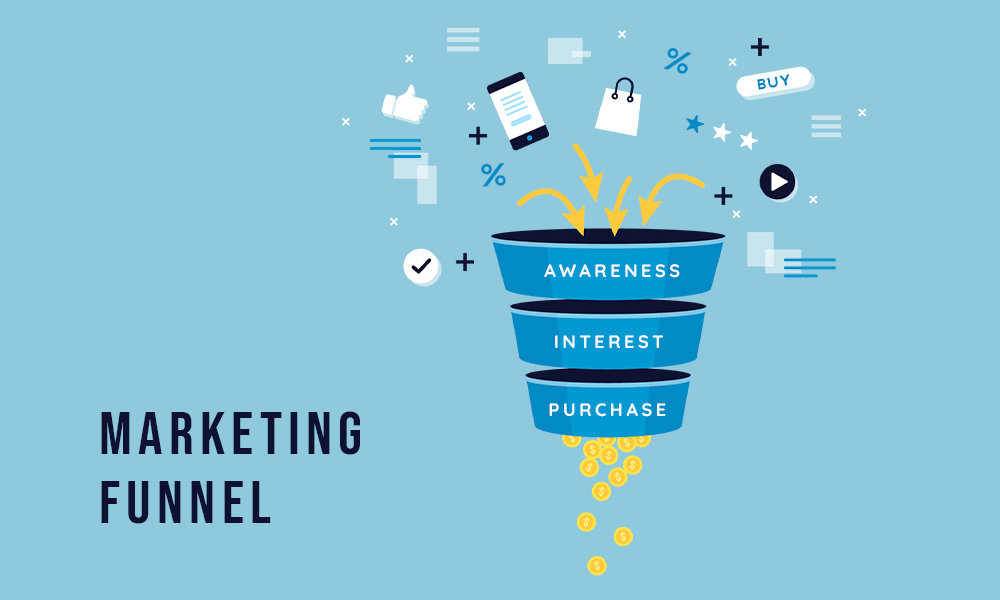
✧ Interest
These are folks going shopping. They have identified your answer to their problem, and you now must keep them engaged by inviting them to join your newsletter list, download a useful freebie, and/or follow you. They are ready to proceed to the next section of the funnel.
✧ Purchase
Buyers who are prepared to make a buy. They are aware of you and how you solve their problem or meet their needs at this point, and they only need that nudge to complete the checkout.
You aim to make this transfer as simple as possible, with as few friction points as possible for your buyer to back out (easy and secure payment for instance). You can close the transaction with further complementary incentives or first-time purchase discounts, for example.
✧ Repeat
Buyers who have completed a transaction are an excellent resource to cultivate for future purchases (especially if they are pleased with you).
Your job is to keep customers satisfied by offering them further purchases and incentives to become brand champions, so funnelling more prospective new purchasers into the top of your eCommerce marketing acquisition funnel.
✧ Bonus example
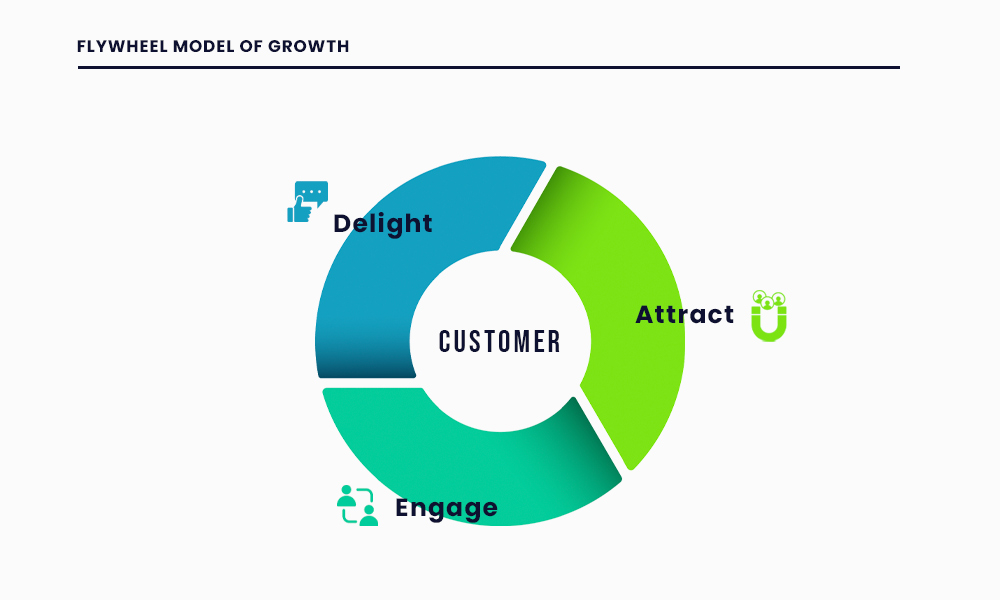
Customers expect that businesses should care about more than just the transaction. Companies that comprehend new client behaviours have changed their business models. Customers are now a part of their success formula.
Organisations can assure client satisfaction by employing loyalty and referral as growth elements in this manner. These strategies are part of the flywheel model.
The flywheel is a revolutionary business model that places the client at the heart of the operation. The approach, which is based on the analogy of a flywheel, tries to keep the sales churning. The model's primary goal is to produce satisfied customers. Then, leverage their happiness to create repeat sales and referrals.
Types of Marketing Channels for E-commerce
Choosing the correct inbound marketing channels is a critical component of eCommerce marketing. You may have a lot of ideas about which channels to invest your time and money in, but this should be founded on competitive analysis and particularly tailored to your target demographic.
✧ Chatbots
Chatbots have emerged as one of the most effective means of engaging potential customers and delighting returning customers. Customers enjoy them because they provide a faster way to acquire the information they require, whether it's assistance in picking a product or checking to see if an order has been dispatched.
Chatbots assist eCommerce organisations in lowering customer support expenses, increasing conversion rates, and increasing retention.
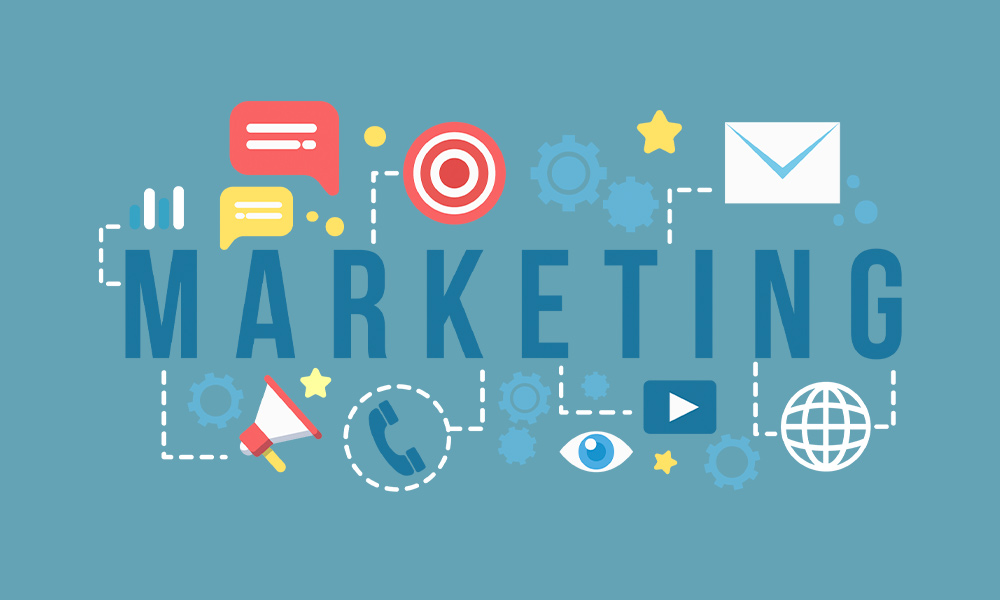
You should employ one of two sorts of chatbots. You can use a live chat widget to display a chatbot on your website, or you can deploy a chatbot on social media sites such as Facebook or Whatsapp. They perform admirably on both desktop and mobile platforms.
Speaking of mobile devices, here are two excellent ways for improving engagement with your mobile users: push notifications and text messages.
• Push Notifications
Push notifications are messages that arrive on your mobile device or browser. Click-through rates on these are typically about 12% but can reach as high as 30% with a well-targeted campaign. Deliver push alerts to your current customers to send them promotions, transactional information, and content changes.
• Text Messages
Text messaging is another excellent technique to communicate with your customers. According to studies, this is one of the most engaging marketing methods. 58.7% of text messages are responded to within 5 minutes, and 50% are responded to inside the first three.
Furthermore, according to EZTexting, 100% of people attain inbox zero with their text messages.
As a result, it's an extremely effective channel for any eCommerce firm.
Here are some of the best SMS marketing methods to enhance consumer engagement and sales:
Text message shipping and delivery alerts Automate the delivery of all transactional notifications in this manner.
✣ To increase referrals and repeat consumers to your online store, send referral and loyalty programme benefits.
✣ Send discount coupon promotions and shopping cart messages.
✧ Influencers
Influencer marketing has come to be associated with eCommerce. It is the engine that powers many other online marketing channels, such as paid advertising, conversion optimization, and social media community building.
According to studies, 92% of consumers trust recommendations from friends and family more than advertisements. Shoppers often browse influencer content to gain ideas for what to buy next, according to the statistics.
Influencer recommendations are used by 49% of consumers when making a purchasing choice.

Influencers should be used by business owners to develop photos and films that they can subsequently utilise on their website, product pages, brand awareness campaigns, retargeting sequences, landing pages, and marketplace product listings.
The ideal method to employ influencers is to find individuals whose audience fits the numerous target populations you are attempting to reach.
Learn how to put up an influencer campaign, discover the proper influencers, and retarget your traffic and current customers to enhance your eCommerce sales.
These are folks who have engaged audiences and can help you promote your business to them. You can identify the proper people to collaborate with by searching your followers or doing a hashtag search.
Launching a giveaway campaign is one of the most effective influencing methods. You can do it with an influencer or another company in your niche. Speaking of niche and influencers, you could also consider micro-influencers as these have a more dedicated following that’s targeted specifically to a certain niche with more engagement offered to their followers.
✧ User-Generated Content
What is an excellent strategy to publicise these giveaways? By providing prizes and additional entries to users who share photographs or videos of your goods.
This is known as user-generated content (UGC), and it is a very effective approach to help your campaign go viral. Request photographs and videos of current customers using your items, as well as success stories, and post all of this content on your product and category pages.
Frank Body, an Australian beauty firm, employed user-generated content and influencer marketing to generate $20 million in sales in its second year. They accomplished this through really innovative content and freebies centred on the hashtag #letsbefrank.

✧ Conversion Rate Optimisation
Conversion rate optimisation (or CRO) is essential for all businesses, but it is extremely effective in the area of eCommerce marketing. Every brand should be continually tweaking its website to optimise user experience, conversions, and bottom line.
Here are a few high-level eCommerce marketing methods that businesses can apply to increase conversion rates.
• Decreased Abandonment Rates
Shopping cart abandonment is a major issue for online retailers. Cart abandonment is 69% on average across all industries, and it's significantly worse for mobile users, at 85%. Launch popups, perform retargeting campaigns, and conduct extensive usability testing to optimise underutilised portions of your website.
• Improved Checkout Processes
The checkout procedure is one of the most important aspects of any eCommerce website. Make sure yours is straightforward to understand. Remove any extraneous fields and include the guest checkout options as well as any applicable third-party payment options.
• Display User-generated Content & Reviews
Displaying social proof in the form of online reviews and user-generated material is an excellent method to increase your eCommerce conversion rate. UGC has a significant impact on customer purchasing decisions, increasing conversions by 29%.
You can automatically display client product photographs and videos on your product and category pages by using a marketing tool like Loox or Pixlee.
• Continuous A/B Testing
Every successful eCommerce firm is built on data and collects data on what works and what doesn't using heat maps and/or surveys.
You can also obtain live recordings of users navigating your site and attempting to check out, and then adjust or test things based on what they indicated was most challenging or unclear.
Consider how simple it is for a user to complete your transaction, add something to their basket, or even find the item they are looking for.

What are the most critical things to test?
Here are a few examples.
✣ Your website should be easy to navigate; make sure your top menu and site layout are apparent.
✣ Improve the speed of your website and compress all of your photographs.
✣ Make sure that all of your products have eye-catching, high-quality photographs.
✣ Make certain that your calls to action (CTAs) are unambiguous.
✣ Improve your checkout procedure.
✣ Use Google Analytics to obtain information about your bounce rate and visit duration.
✣ Prepare for mobile traffic.
✣ Install a live chat widget to increase online sales and address consumer complaints in real-time.
CRO is one of the key strategies that Amazon adopted to become the world's largest eCommerce platform. They have polished the purchasing process to the point where internet shopping is a smooth experience.
✧ Online Markets
Brands can store and sell their products in locations other than ecommerce platforms. Online marketplaces, such as Amazon and eBay, have grown in prominence over the last decade and have become major participants in the eCommerce field.
According to a recent study, 74% of US shoppers start their product searches on Amazon. Furthermore, 56% of shoppers say that if they could buy all of their products from a single store, it would be Amazon.
The following are the benefits of selling your eCommerce products on online marketplaces such as Amazon or Walmart:
✣ These platforms are visited by a large number of internet users.
✣ The platform and huge media firms spend a lot of money on affiliate marketing (and paid search).
✣ It is simple to design display advertisements and employ native marketplace advertising solutions (like Amazon ads)
✣ It is frequently easier to rank at the top of a marketplace's search results rather than Google, and then lead people to your brand site.

✧ Pricing Strategy
Learn how to automate your pricing, remain competitive, and conquer across all platforms and marketplaces.
Pricing is fundamental to online sales, and it becomes much more important when selling online products across many social media platforms and online marketplaces. To stay competitive, it's difficult (if not impossible) to modify pricing in real-time, especially on weekends and holidays.
Here are some steps you can take to set up pricing automation:
✣ Create a price strategy for your competitors (monitor your competitors and create automation rules for adjusting your pricing)
✣ Price your products dynamically across all platforms and marketplaces.
✣ Use pricing intelligence and pricing alerts to boost your ROI significantly.
✧ Automated Marketing
To enhance sales and conversion rates, learn how to understand consumer behaviour, optimise every touchpoint throughout the buyer's journey, and automate your marketing channels.
We've already discussed pricing automation; now it's time to discuss all of the other sorts of automation you should be incorporating into your eCommerce approach. Ecommerce sites necessitate a slew of time-consuming chores and processes, and the sooner they are automated, the better.
For example, every visitor to your website who converts into a lead should be sent an email flow. Every new customer should receive a welcome flow, as well as transactional notifications like order confirmation, shipment and delivery notifications, and a customer survey. Omnichannel experiences should be automated throughout the buyer journey (like SMS campaigns that trigger email flows, etc.).

✧ Email Marketing
By far the most successful marketing channel for any eCommerce firm is email. Many additional channels (such as search ads) frequently deliver traffic that translates into email leads.
And the email campaigns you send to your email list help to boost the conversion rate of your other marketing channels (like Facebook ads, Google ads, and organic search traffic). Email marketing has a return on investment of roughly $38 in sales for every $1 spent.
And the beauty of email marketing is its adaptability. You can tailor your emails, target the proper customer category, and send the best messaging to each recipient at the perfect time for them to buy.
Despite all of the algorithm changes on social media platforms and search engines, the email list remains the one location where a company can maintain and truly own its customer data.
Another advantage of email marketing is that it can boost the conversion rates of all other channels when used for remarketing. For example, you can convert a lead from a Facebook ad by sending a remarketing email. This successfully improves your Facebook ad campaign.
To target particular client segments with individualised emails, every firm should employ an email marketing provider that interfaces seamlessly with their eCommerce platform and enables basic email automation.
Brands should try sending the following email campaigns:
✣ Abandoned cart emails are sent to users who have added something to their cart and subsequently abandoned it.
✣ Email promotions (holidays, sales)
✣ Behavioural segmentation based on site user behaviour
✣ Product upsells and cross-sells – dynamically display the most recently viewed or added to the user's cart products. You can also show products that are comparable or complementary.
✣ Customer loyalty and referral marketing campaigns
✣ Send a welcome flow to new subscribers or consumers to welcome them to your online community.
✣ Shipping and delivery alerts are provided whenever an order is shipped or delivered. This is a critical touchpoint in the customer journey that will help you establish loyalty and improve the user experience significantly.
✣ Email newsletter campaigns are an excellent method to stay in touch with your audience and offer the most recent product and promotion news.
Brands should also try testing the following components in their emails:
✣ Testimonials from customers, success stories, and product reviews
✣ Content created by users (UGC)
✣ Social media posts that are popular
✣ Individual items as well as product categories
✣ Images and videos from influencers
✣ PR endorsements or reviews
✣ Put your subject line and preview text to the test
Your primary goal should be to personalise your emails and deliver the appropriate email to the appropriate audience segment. A methodical approach to audience segmentation and A/B testing can deliver excellent results for any of your email marketing efforts over time.
Combining your email marketing campaigns with additional channels - SMS marketing, chat communications, and push notifications - will give a more cohesive user experience and enhance your sales.
Send a push notification in the morning, a chat message blast in the afternoon, and your email campaign in the evening, all with the same messaging and promotion. This can significantly increase your sales.
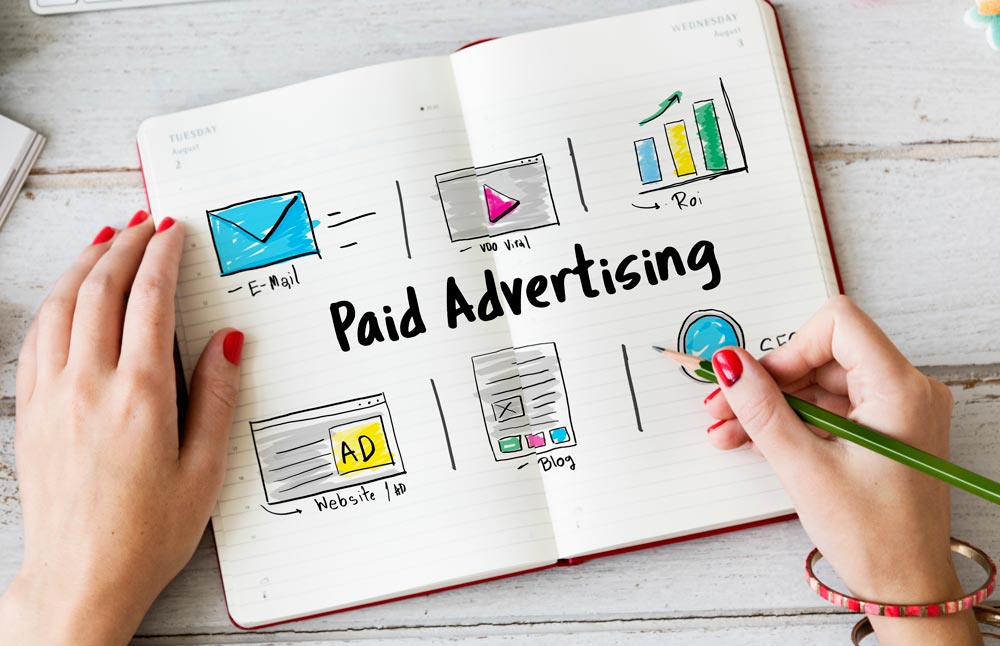
✧ Paid Ads
Advertising is the most effective strategy to increase sales to your eCommerce store, and there are numerous ways to advertise. Because Facebook has the highest ROI, most businesses continue to spend the majority of their advertising money there. According to data, the average Facebook user clicks on 12 ads every month, and Facebook has the greatest audience, with 2.14 billion individuals.
Many successful internet stores have traditionally been founded via Facebook marketing. This has spread to a variety of different paid advertising campaigns, including Google Shopping, Amazon search advertisements, targeted product ads on Instagram/TikTok/Youtube, and native advertising.
Let's take a look at each one.
• Google Ads
Set up Google Shopping campaigns to increase organic search impressions and create another fantastic sales channel. Google recommends products when it recognises a transactional search, such as "purchase Nike sneakers." If you rank high in the search results, you will receive greater exposure on the first page.
Google Shopping integrates seamlessly with Google Ads (formerly known as Google Adwords) and your organic product listings.
Amazon advertising is one of the most common kinds of eCommerce pay-per-click advertising.
In 2020, Amazon's revenue increased by 23.5% year on year. Amazon is predicted to earn more than 10% of all digital ad spending in the United States. Amazon's advertising technology is one of the most advanced in the world, allowing for extensive customization, keyword optimization, and A/B testing.
• Social Media Video Ad Campaigns
Ads on Facebook and Instagram are essential for any eCommerce firm. You should also experiment with YouTube ads and sponsor YouTube influencer videos.
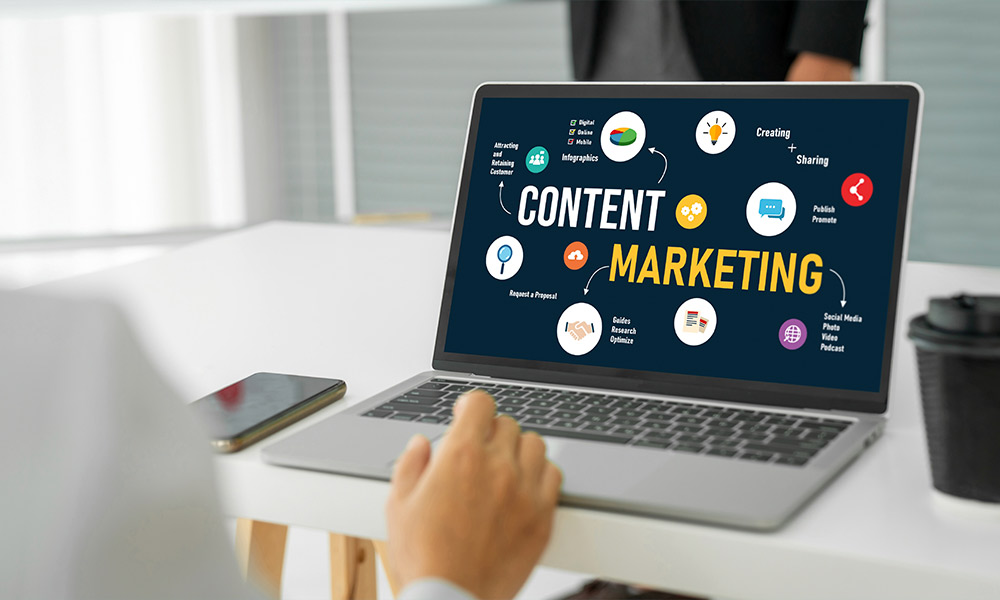
✧ Content Marketing
Any inbound marketing plan must include digital content. Material marketing is all about providing relevant content to each website visitor to attract them to convert to your site.
Content can be utilised to reach clients in the awareness stage (at the top of the funnel) or potential purchasers who are shopping and comparing items (middle of the funnel). It's also an efficient technique to engage with your existing loyal consumers and entice them to return to your site to make another purchase.
Here are some forms of content to test out:
• A gift guide for eCommerce
• Long-form blog posts
• Customer feedback/video content
• Company updates
If you concentrate on writing long-form guides that educate the consumer while truly attempting to solve their problem, providing solutions, and telling tales - you may generate a lot of high-quality leads from individuals searching for this information on Google.
The online content on your product and category pages is another critical component of eCommerce content marketing. Well-known online shops don't simply aim to describe their products well. They tell a tale and guide the visitor through the sales funnel using unique humour and strong product copy.
✧ Search Engine Optimisation(SEO)
Because over 40% of product searches originate on search engines, search engine optimization (SEO) is an extremely powerful marketing approach.
Another study that looked at over 18,000 eCommerce sites in the United States discovered that organic searches on Google, Yahoo, and Bing accounted for 30.5% of all traffic. That's nearly a third!
So, if you want to receive a substantial portion of organic traffic, you must enhance your eCommerce SEO.
And it's not enough to be someplace on Google; you must appear on the first page. According to studies, 70-92% of all organic traffic is grabbed on the first page of Google; customers just do not browse the second page. As a result, appearing at the top of search engine rankings is critical.
How do you go about doing that?
Let’s break that down into the following - Ecommerce SEO is divided into two key components.
• On-page SEO
Optimise your site for Google, particularly the category and product pages. This includes incorporating your desired keywords or search terms into the URL, title, headers, and meta descriptions.
Also, ensure that you have all of the different components of your items that searchers are looking for, such as measurements, weight, guarantee, colour, and other vital characteristics.
Begin with long-tail keyword searches and gradually progress to short-tail and increasingly competitive phrases.
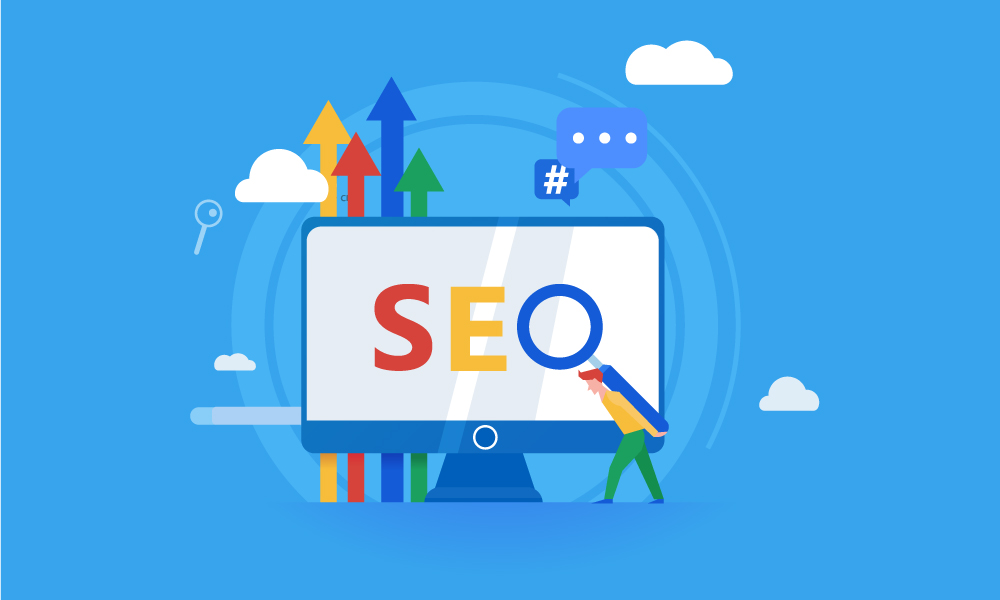
• Off-page SEO
Increase your keyword ranks by acquiring more backlinks from reliable sites in your sector. This could include collaborations with other bloggers, authoring blog entries that are shared and linked to by major publishers, or being included in gift guides.
Keep in mind that a backlink from a relevant industry site is 10 times more powerful than a link from a blog that publishes articles on every topic under the sun. To determine whether a site is related to your niche, examine its organic keywords and ensure that it ranks for relevant keywords.
There is also a wealth of free SEO software and tools available online to assist you in optimising both the on-page and off-page parts of your SEO campaign.
Pro tip: debuting on Google Shopping can increase your search exposure and organic traffic. So be sure to investigate that channel.
✧ Social Media Marketing
Organic social media is a tremendously effective avenue for any eCommerce firm. It enables you to engage with audiences for free while increasing clicks and purchases to your website.
Ecommerce sites are highly visual, thus they must choose the best platforms to showcase their products. To target those audiences with the highest buy intent, publish on Instagram and Pinterest.
A truly effective eCommerce strategy should not simply combine visually appealing designs. It collects audience data and then uses it to create social media content. That is what allows them to optimise, enhance engagement, and improve their storytelling.
Here are some of the top eCommerce marketing strategies for increasing your social media accounts and engaging your online audience.
Repurpose your blog material to increase leads and visitors to your website.
✣ Share posts on the newest market developments and how your company is staying ahead of the competition.
✣ Distribute product recommendations as well as expert guidance on how to use the product.
✣ Highlight products and any local marketing initiatives you may have.

✧ Public Relations
Public relations is a type of content marketing that is only released on huge publisher websites. This is an excellent technique to obtain exposure to a pre-existing audience. There is a plethora of software and tools available for locating the correct journalists to contact, such as PressHunt, which provides access to over 750k journalists, reporters, and podcasters.
Many publishers offer online storefronts where they can set up a page for you and market your brand. They can also promote your products in their newsletters and send out personalised promos to their audiences. Public relations can be costly, but if done well, it can help you significantly boost your consumer base and generate tremendous growth.
✧ Affiliate Marketing
You may be wondering how these web publications make money.
Using affiliate marketing.
Affiliate marketing is one of the most effective ways to monetize connections and collaborations with bloggers and publishers.
You may easily set up your affiliate programme using a service like Referral Candy, or you can join one of the large affiliate networks like PepperJam, Share-a-sale, Rakuten, or Refersion.
Joining a huge affiliate network gives you access to thousands of publications, blogs, and discount sites on various platforms. And many of the external ties you have with media are then controlled by one of these huge affiliate platforms.
Pro tip: You can administer your loyalty programme for loyal customers or referral programme for influencers using the same affiliate tools and Shopify apps.

Digital Marketing & E-Commerce
One last question we have to ask ourselves is how digital marketing & e-commerce go hand in hand.
Marketing any product or service via any marketing channel is referred to as digital marketing. Ecommerce marketing is solely concerned with the promotion of eCommerce websites. Both want to increase sales and generate leads, and they can utilise the same marketing channels to do it.
Closing Words
There are numerous ways to expand your eCommerce brand.
If you want to succeed, you must focus on user experience, most important and relevant content, constantly improve your website, conduct paid media campaigns, and, of course, develop distinctive messaging.
Remember to avoid launching too many eCommerce marketing efforts at once. Begin with the most important: use social media platforms for posting, pay-per-click advertising (PPC), Facebook and Google ads, search engine optimization (SEO), and email marketing.
Then, when you win on those, choose your influencers intelligently, launch UGC campaigns, gain more social proof, and you're off to the races.
A key component of any successful marketing strategy is a focus on data and a company culture that encourages concept testing and optimization. That implies you should surround yourself with people who aren't scared to A/B test every marketing modification and then optimise the site and marketing campaigns based on the results (and not based on their opinions).
Finally, a good eCommerce marketing strategy fosters trust, loyalty, and 'word-of-mouth'.

